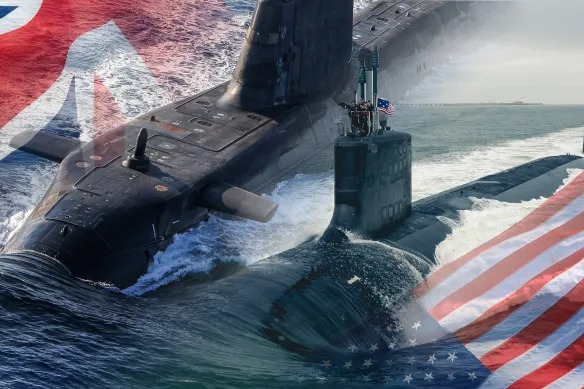In a groundbreaking move set to redefine the landscape of naval power and geopolitics, the United Kingdom has announced a historic contract worth $4 billion to construct nuclear-powered attack submarines under the AUKUS program. The UK Ministry of Defence has bestowed this monumental task upon three British giants – BAE Systems, Rolls-Royce, and Babcock. These state-of-the-art submarines, known as SSN-AUKUS, are slated to become the Royal Navy’s largest, most advanced, and most powerful attack submarines ever operated. This initiative, born out of collaboration with Australia and the United States, marks a significant milestone in bolstering maritime security and challenging the assertive actions of China in the Asia Pacific region.
AUKUS’ Ambitious Project
The AUKUS program, unveiled by the leaders of Australia, the UK, and the US in March, has set its sights on countering China’s rising influence in the Asia Pacific region. SSN-AUKUS, a critical component of this endeavor, represents an extraordinary leap in Australia’s military capability. The nuclear-powered submarines, with their enhanced stealth, extended range, and cutting-edge technology, promise to be a game-changer. These submarines are not only a testament to technological prowess but also signify the first instance where the United States has shared its nuclear-propulsion technology with a nation other than the UK.
Transforming Australia’s Naval Strength
Australian Defence Minister Richard Marles aptly described the AUKUS deal as a transformative moment, equating it to the most significant advancement in Australian military capability since World War II. The addition of SSN-AUKUS to Australia’s naval fleet will replace its current diesel-powered submarines, offering a significant upgrade in terms of capability and strategic importance. Moreover, the US has plans to supply up to five Virginia-class nuclear-powered submarines to Australia in the early 2030s, further bolstering Australia’s naval prowess.
AUKUS: Strengthening Regional Deterrence
Analysts concur that the AUKUS program will play a pivotal role in enhancing regional deterrence against China’s assertive actions in the Pacific. SSNs possess unparalleled stealth and versatility, enabling them to operate effectively in contested waters, hunt Chinese warships and submarines, control strategic sea lanes, and project power with long-range cruise missiles. This multifaceted capability raises the specter of horizontal escalation, compelling Beijing to consider the potential involvement of all three AUKUS nations in any conflict involving SSN-AUKUS submarines.
This historic contract marks a turning point in maritime security and signifies a unified effort by these nations to bolster their collective presence and influence in the Asia Pacific region. While the AUKUS initiative promises to complicate Chinese military planning, it also raises questions about the potential ramifications of this geopolitical maneuver. As the construction of SSN-AUKUS submarines progresses, the world watches with bated breath to see how this bold venture unfolds and shapes the future of naval power dynamics.















